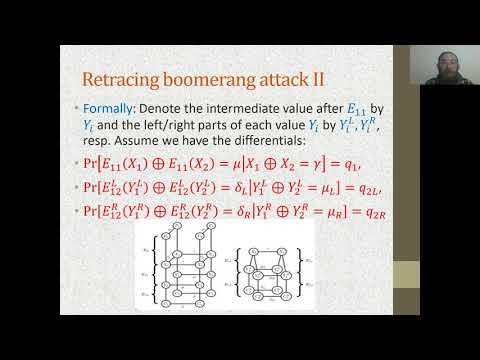Welcome to the resource topic for 2019/1154
Title:
The Retracing Boomerang Attack
Authors: Orr Dunkelman, Nathan Keller, Eyal Ronen, Adi Shamir
Abstract:Boomerang attacks are extensions of differential attacks, that make it possible to combine two unrelated differential properties of the first and second part of a cryptosystem with probabilities p and q into a new differential-like property of the whole cryptosystem with probability p^2q^2 (since each one of the properties has to be satisfied twice). In this paper we describe a new version of boomerang attacks which uses the counterintuitive idea of throwing out most of the data (including potentially good cases) in order to force equalities between certain values on the ciphertext side. This creates a correlation between the four probabilistic events, which increases the probability of the combined property to p^2q and increases the signal to noise ratio of the resultant distinguisher. We call this variant a retracing boomerang attack since we make sure that the boomerang we throw follows the same path on its forward and backward directions. To demonstrate the power of the new technique, we apply it to the case of 5-round AES. This version of AES was repeatedly attacked by a large variety of techniques, but for twenty years its complexity had remained stuck at 2^{32}. At Crypto’18 it was finally reduced to 2^{24} (for full key recovery), and with our new technique we can further reduce the complexity of full key recovery to the surprisingly low value of 2^{16.5} (i.e., only 90,000 encryption/decryption operations are required for a full key recovery on half the rounds of AES). In addition to improving previous attacks, our new technique unveils a hidden relationship between boomerang attacks and two other cryptanalytic techniques, the yoyo game and the recently introduced mixture differentials.
ePrint: https://eprint.iacr.org/2019/1154
Talk: https://www.youtube.com/watch?v=_Jsv1DX4yeE
See all topics related to this paper.
Feel free to post resources that are related to this paper below.
Example resources include: implementations, explanation materials, talks, slides, links to previous discussions on other websites.
For more information, see the rules for Resource Topics .
